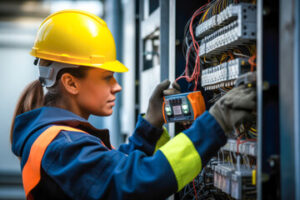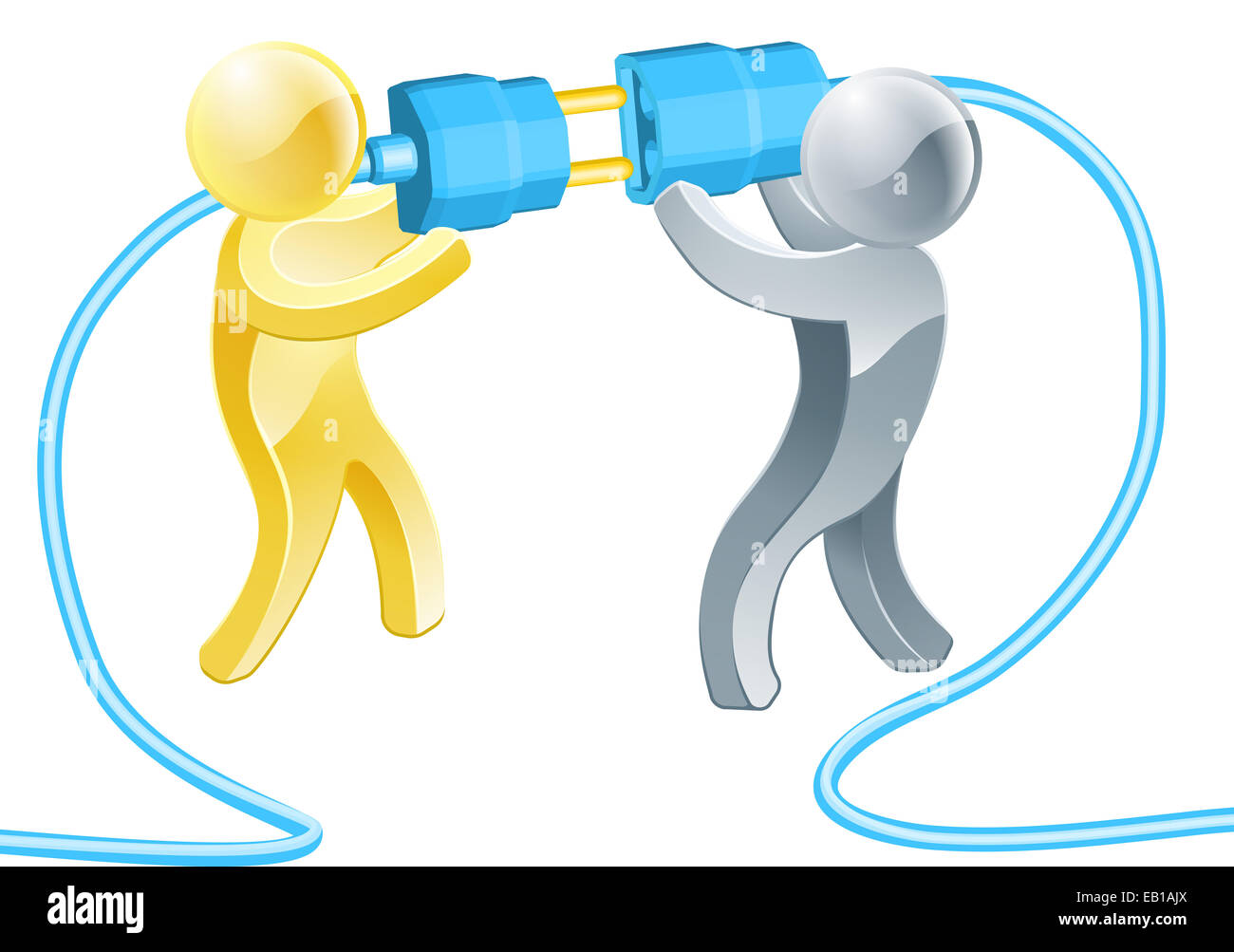Electrician Boca Raton works in many different industries and require a lot of heavy lifting, bending, squatting, climbing, and squeezing. It is a good job for people who have strong problem-solving skills.

A certificate program in electrical engineering can give you a jump start on an apprenticeship. Many programs also provide a stepping stone to a bachelor’s degree.
In the face of exorbitant college costs and a tough job market, more students are considering trade schools and apprenticeship programs. One of the most popular options is becoming an electrician. These professionals offer above-average salary prospects and valuable work experience that can be a great alternative to higher education. However, there are some things you should know before getting started.
First, you should know that not everyone is suited to the profession. Electricians are predominantly realists who enjoy hands-on work and a steady routine. They are also inquisitive and investigative individuals who like to spend time by themselves with their thoughts. If you score highly on these traits, an electrical career may be right for you.
The majority of electricians pursue a post-secondary education and apprenticeship in order to gain the skills needed for the profession. Some colleges and trade schools have specific programs that cater to future electricians, while others offer an associate’s degree in general studies. These programs typically include courses on electrical theory, wiring techniques, safety practices, and the National Electrical Code. Many programs also incorporate hands-on training.
After completing your education, you will need to pass a written exam and a practical exam to receive your Master Electrician license. The written exam consists of multiple choice questions based on the Electrical Code and National Electrical Code. You can find practice questions online, and you will need to pass the written exam with at least a 70%.
If you decide to earn a degree, it is recommended that you pursue a specialty in order to increase your earning potential and gain job opportunities. Choosing a specialty in electrical engineering, for example, will allow you to specialize in areas where there is a high demand. This can help you find jobs in the industry and get them done faster, which will make you more competitive.
Regardless of what degree or apprenticeship you choose, be sure to create a strong resume and highlight your relevant experience. This will help you find the best electrician jobs in your area and ensure that you are qualified for them.
Job Duties
Electrical systems power the lights and equipment that keep our homes, businesses, and industries running. It’s the job of electricians to install, repair, and maintain those systems. They also ensure that all work is up to code and safe. An electrician may specialize in specific types of work, such as industrial, commercial, or residential. But the overall responsibilities remain the same.
Electricians troubleshoot technical discrepancies in electrical systems and install new wiring, switches, outlets, and lighting fixtures. They also repair and upgrade existing systems. They must be able to read blueprints and follow specifications for each project. They often work with high-voltage cabling, so they must be able to handle hazardous materials.
Almost every building requires a complex electrical system to function. The wiring, appliances, and equipment need to be connected properly for it to work. An electrician will need to follow all safety protocols and be able to work with different systems. They will also need to be able to communicate with their coworkers and customers.
Electricians are often required to climb and work in confined spaces, so they must have good physical strength and manual dexterity. They also need to be able to work well under pressure and on tight deadlines. They must also be able to understand and follow written and verbal instructions, as well as perform routine maintenance on their tools.
An electrical apprentice works under the supervision of a journeyman or master electrician to learn all the skills necessary for the position. This includes preparing sketches and blueprints for layout and installation of electrical wiring, equipment, and fixtures. They also need to know how to test and record meter data and power wattage usage. They also need to be familiar with various kinds of motors, electrical instrumentation, and switch-gear equipment.
A wireman prepares sketches and follows blueprints to install and repair electrical wiring, equipment, and fixtures. They may also be responsible for the laying of wires indoors and outdoors. They may also work on specialized equipment like generators and HVAC systems. Other duties include installing and testing security and sound systems and working with computerized controls, such as programmable logic controllers (PLC). They may also be called to lay buried cable for telephone or electricity transmission lines.
Salary
A person who becomes an electrician can expect to earn a good salary. The average wage for an electrician is $51,890 per year according to the U.S. Bureau of Labor Statistics, with the top 10 percent earning more than $85,000 each year.
The amount of money an electrician makes depends on several factors, such as location and company. In general, electricians who work in larger cities make more than those who work in smaller areas. This is because large companies usually have more money to pay their employees. Another factor that affects how much an electrician makes is their level of experience.
In addition to these factors, the pay for an Electrician may vary based on the types of projects they work on. For example, electricians who focus on residential projects typically make less money than those who specialize in industrial work. This is because industrial projects tend to be more complex and require a greater number of skills.
While being an electrician can be a rewarding career, it can also be challenging and stressful. Electricians often work long hours, and they may have to be on call at times to respond to emergencies. This can make it difficult for them to balance their professional and personal lives. Additionally, the physical demands of the job can be tough on workers’ bodies. They are frequently on their feet and maneuvering in tight spaces, and they may need to lift heavy equipment or climb ladders.
Finally, electrical work can be dangerous, and it is important for electricians to follow all safety protocols to prevent injuries or fires. If an electrician is not careful, they can get electrocuted or cause damage to the wiring in a home or building.
In order to maximize their earnings, electricians should keep track of their time and attendance. If they are able to demonstrate that they are productive on the job, they can increase their salary potential by requesting higher wages. Increasing their salary potential can also be achieved through promotions and additional training opportunities. For example, an electrician who becomes a master electrician can earn more than a journeyman electrician by taking on additional duties or overseeing other electricians. ServiceTitan provides integrated payroll tools for technicians, which allows them to track their own time and attendance while minimizing paperwork. This helps them avoid the need to manually transfer dozens of documents between employees and managers, spend time in the office signing off on timesheets, or interrupt their busy schedules to come into the office.
Work Environment
A career as an electrician is a good fit for people who prefer hands-on work to a desk job and want to see the tangible results of their labor. Electricians use their skills to create and maintain electrical wiring systems in residential homes, commercial buildings, and factories. They install lighting, fixtures and equipment and test, repair, and replace electrical components as needed. Electricians also troubleshoot and perform maintenance on industrial machines, electrical power distribution units, circuit breakers, generators, and motor controls with high and low voltage.
Electricians must adhere to strict safety guidelines when performing their work. This includes wearing personal protective gear such as rubber insulated gloves, boots, and hard hats, as well as using tools that can cause burns or cuts if mishandled. They must also be able to read blueprints and technical drawings in order to properly install or repair wiring, electrical appliances, and other related equipment. They may also be responsible for preparing cost estimates and other documentation as required by clients.
Depending on their specialization, electricians may be exposed to high or low levels of electricity and other hazardous materials such as lead and solvents. They may also be required to perform strenuous tasks such as bending conduit, lifting heavy objects, and standing, stooping, or kneeling for long periods of time. They often have to travel between jobs, and may be required to be on-call for emergencies or shift work.
While some electrical workers perform their duties under the supervision of senior electricians, many are self-employed and operate independently. For this reason, electricians must have strong interpersonal skills to communicate effectively and work productively on their own. They must be able to follow directions, solve problems quickly and efficiently, and provide constructive feedback on their work. Moreover, they must be physically fit to lift heavy objects, climb ladders and scaffolding, and stand for extended periods of time. Lastly, they must be able to interpret technical documents and memos.
